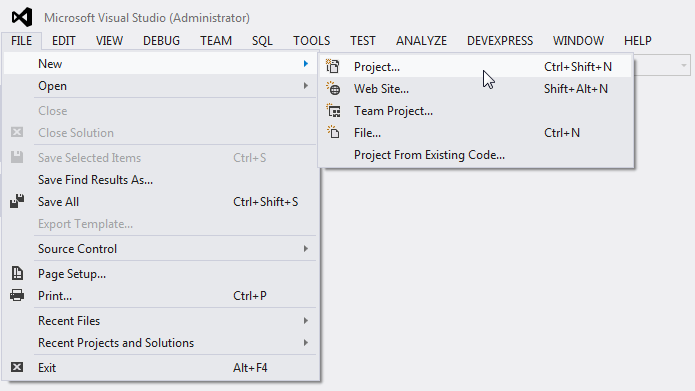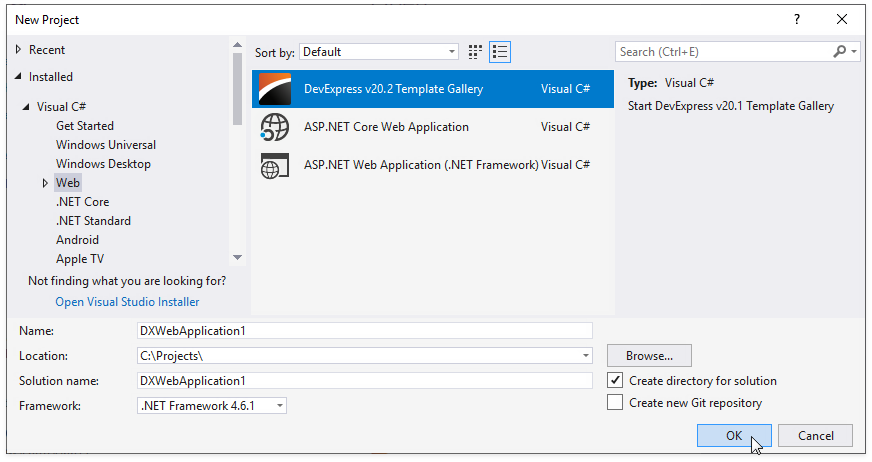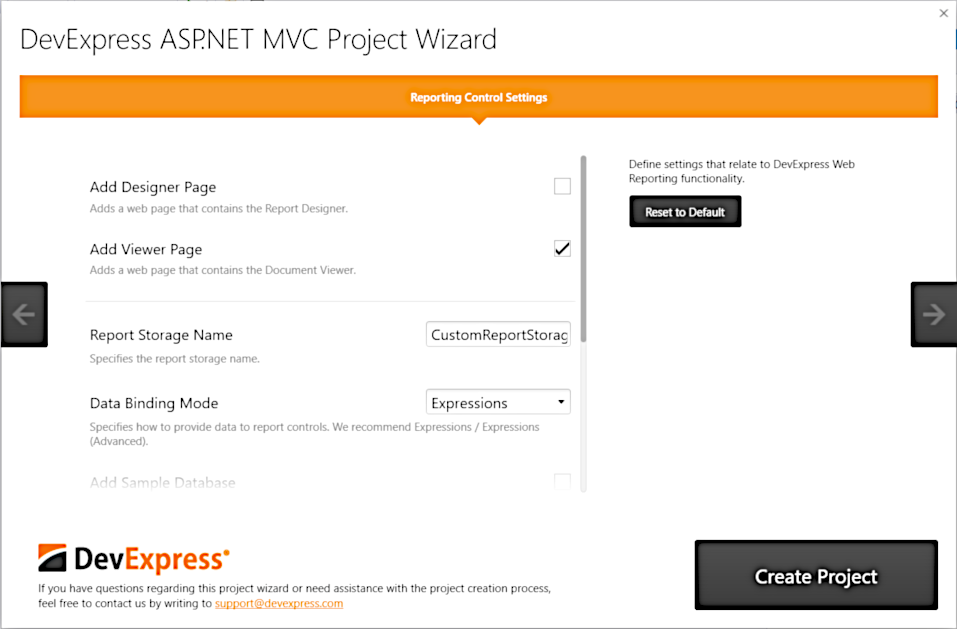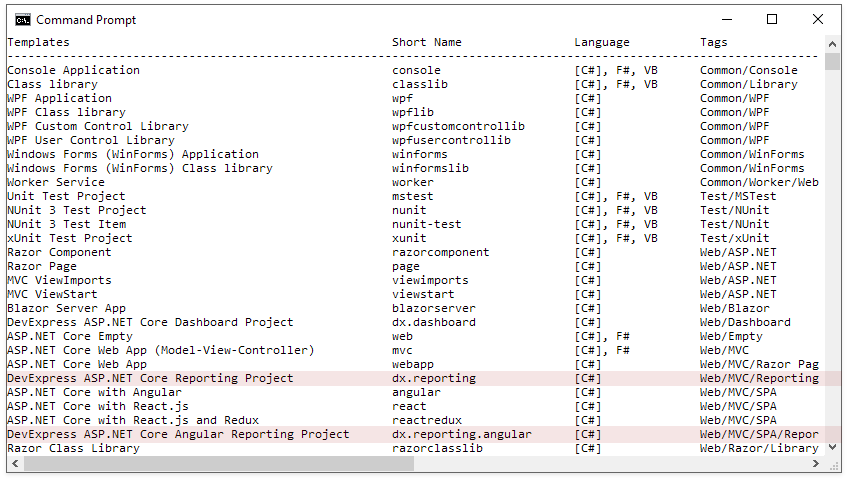Create an ASP.NET Core Application with a Document Viewer
- 4 minutes to read
This tutorial describes how to use the DevExpress Template Gallery or .NET Core command line interface (CLI) to generate a basic ASP.NET Core application that contains the Document Viewer control.
Use the DevExpress Template Gallery
Follow the steps below to create an ASP.NET Core application with a Document Viewer:
Ensure that Node.js 10.0 or later with the npm package manager is installed on your computer. Use the node -v and npm -v console commands on 64-bit Windows systems to check package versions (if the package’s version does not match the version you installed, check the PATH environment variable’s value - as there may be a conflict between an x86 and x64 package).
To create a new project, select FILE | New | Project in the main menu (or press CTRL+SHIFT+N).

In the invoked New Project dialog, choose the Installed | Visual C# | Web category and select the DevExpress v20.2 Template Gallery template.

Specify the application name and click OK.
In the invoked DevExpress Template Gallery, select Reporting Application in the ASP.NET Core category.

Select framework version and click Create Project.
Enable the Add Viewer Page checkbox in the invoked DevExpress ASP.NET MVC Project Wizard to add the Document Viewer to the web application (the Viewer.cshtml page). You can add a Web Document Viewer and a Report Designer to the application.

Use the following Document Viewer settings:
- Report Storage Name- the server-side report storage‘s class name.
- Data Binding Mode* - switches between the Expressions and Expressions (Advanced) modes that specify how data is fetched to reports and controls. See Data Binding Modes for more information.
Click Create Project to apply these settings to the project.
After Visual Studio has created the application, right-click the package.json file in Solution Explorer and choose Restore Packages.

You can configure the Document Viewer to load a report when the application starts. Navigate to the Views | Home | Viewer.cshtml file and replace the built-in report name (TestReport in this example) with the name of your report:
@Html.DevExpress().WebDocumentViewer("DocumentViewer").Height("1000px").Bind("TestReport")
Use .NET Core CLI
Use the .NET Core command line interface (CLI) to create an ASP.NET Core Reporting application from the console:
Open the command prompt (console) and type the following command to install DevExpress CLI templates:
dotnet new -i "DevExpress.DotNet.Web.ProjectTemplates"The console displays the list of templates installed on your machine after the package is installed.

Refer to the https://nuget.devexpress.com/#feed-url page and obtain the NuGet Feed URL. This URL includes your personal feed authorization key to access the NuGet package source.
Use the command below to create a new project with a Document Viewer.
dotnet new dx.reporting --nuget-feed https://nuget.devexpress.com/{auth_key}/api --name DocumentViewerApp --add-viewer trueSpecify the following command line parameters to customize the project:
- -nf | –nuget-feed (required) - specifies your personal DevExpress NuGet Feed URL.
- -f |–framework (optional) - the framework version. Use values netcoreapp2.1 or netcoreapp3.0. The default value is netcoreapp3.0.
- -av | –add-viewer - specifies whether to create a web page with a Document Viewer. The default value is true.
- -ul | –use-logger (optional) - specifies whether to log the Report Designer‘s server-side errors and events. The default value is false.
See Create an ASP.NET Core Application with a Report Designer for information on other settings.
Navigate to the newly created application folder and download client resources.
cd DocumentViewerApp npm installEnsure that Node.js 10.0 or later with the npm package manager is installed on your computer. Use the node -v and npm -v console commands on 64-bit Windows systems to check package versions (if the package’s version does not match the version you installed, check the PATH environment variable’s value - as there may be a conflict between an x86 and x64 package).
Use the following commands to restore dependencies, build the application, and get the application’s URL:
dotnet restore dotnet runOpen your browser and navigate to the generated URL to see the result.
